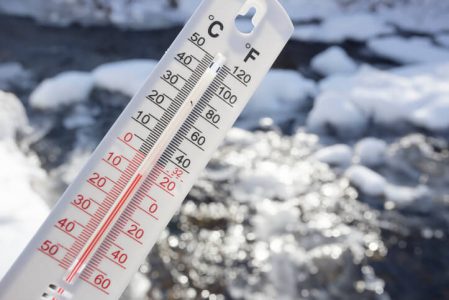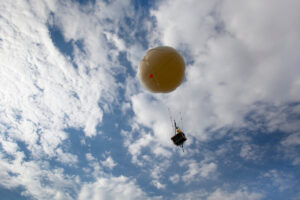What cold temperatures mean to calculating a pressure altitude correction
High-to-low, look-out-below! We’ve been hearing that since our private-pilot days. But what about “Cold and low, look out below”? How many times have you heard that warning? And what does it mean anyway?
I think it is safe to say that it’s standard procedure for pilots to set their altimeters prior to takeoff and again before landing. But how many of us routinely correct for non-standard temperatures? Maybe a little background will help…
Barometric altimeters are calibrated to indicate true altitude under international standard atmosphere conditions (ISA). Any deviation from ISA will result in an erroneous altimeter reading and the aircrafts true altitude diverging from indicated. This can be magnified through failing to apply or incorrectly applying a pressure altitude correction.
If the temperature is warmer than ISA, the true altitude will be higher than the indicated altitude, which is not a problem. But when the temperature is lower than ISA, the true altitude will be lower than indicated and now we start to have a problem. And if the temperature is significantly colder than ISA, the altimeter errors could be large enough to exceed terrain clearance margins on departure or arrival. Now we have a BIG problem.
The FAA response to this safety concern was to complete a risk analysis of cold weather airports using the coldest temperature recorded at each airport over the previous 5 years. As a result of the analysis, Cold Temperature Restricted Airports have been designated in the NAS. Applicable instrument approach charts will contain a snowflake symbol and will include a temperature when the cold weather correction must be applied.
The list of Cold Temperature Restricted Airports and the instructions on how to make the cold temperature corrections can be found within the Notices to Airmen (NOTAM) publication:
A pilot operating into cold weather airports should request the lowest forecast temperature at the airport for departure and arrival times. If the temperature is forecast to be at or below any published cold temperature restriction, he or she must calculate a pressure altitude correction for the appropriate flight segment. No news flash here, but it is the pilot’s responsibility to make sure this gets done.
If you’re lucky enough to have an operating automatic cold temperature compensating system, the system must be on and operating correctly on each designated segment (no news flash there either…), if not, you’ll have to use the ICAO Cold Temperature Error Table to calculate the altitude correction.
Regardless of how the corrections are calculated, ATC must be advised when you are intending to apply cold temperature corrections. They also need to know the amount of correction for the intermediate segment and/or the missed approach altitude. This information is required so they can provide aircraft appropriate vertical separation between known traffic.
A little advanced planning can go a long way toward keeping you safe in very cold weather operation. Print out the list of cold weather airports and put it in your flight bag next to your heated gloves and long underwear. You’ll be safely sitting by the fire at your destination in no time!
RELATED CTS TRAINING










